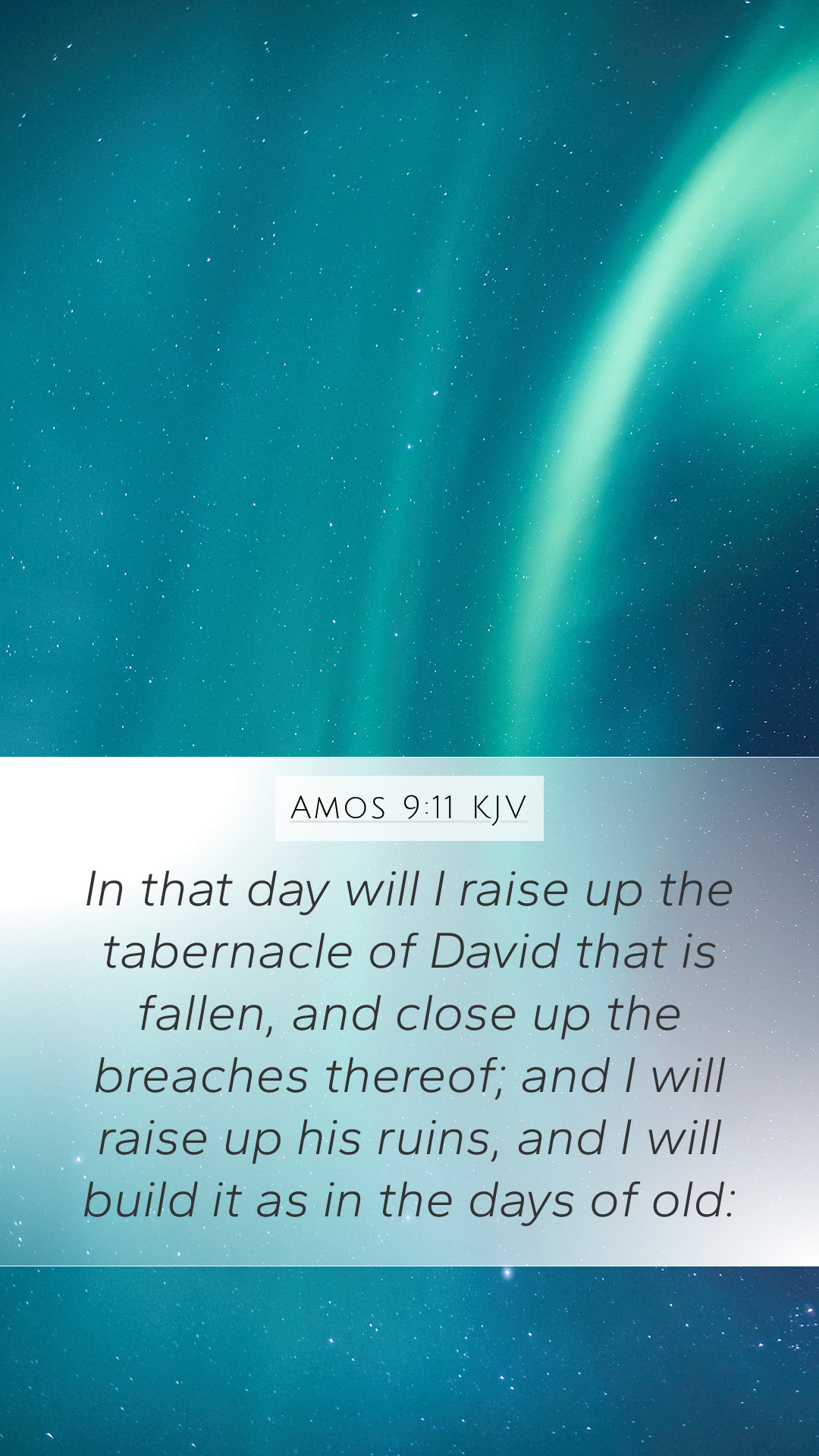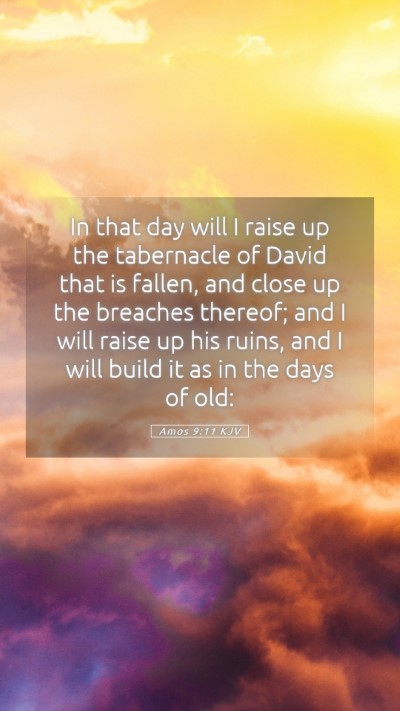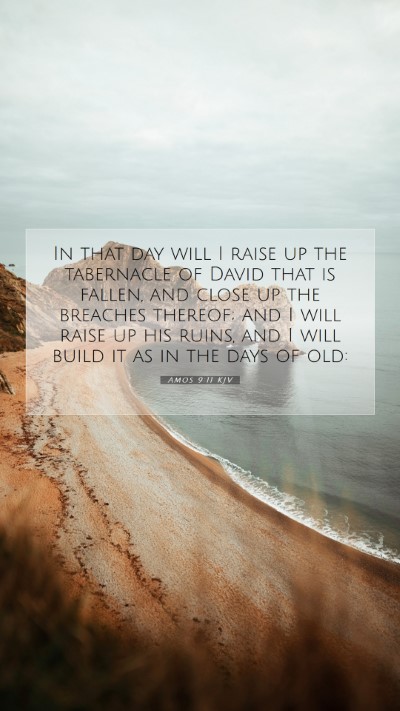Old Testament
Genesis Exodus Leviticus Numbers Deuteronomy Joshua Judges Ruth 1 Samuel 2 Samuel 1 Kings 2 Kings 1 Chronicles 2 Chronicles Ezra Nehemiah Esther Job Psalms Proverbs Ecclesiastes Song of Solomon Isaiah Jeremiah Lamentations Ezekiel Daniel Hosea Joel Amos Obadiah Jonah Micah Nahum Habakkuk Zephaniah Haggai Zechariah MalachiAmos 9:11 Meaning
What is the meaning of Amos 9:11?
In that day will I raise up the tabernacle of David that is fallen, and close up the breaches thereof; and I will raise up his ruins, and I will build it as in the days of old:
Amos 9:11 Bible Verse Meaning
Bible Verse Meaning of Amos 9:11
Amos 9:11 states: "In that day I will raise up the tabernacle of David that is fallen, and close up the breaches thereof; and I will raise up his ruins, and I will build it as in the days of old."
Understanding the Verse
The verse from Amos speaks of restoration and hope for Israel after a period of desolation. This passage highlights God's promise to restore the fallen state of David's kingdom, symbolizing a return to a united and prosperous Israel.
Insights from Public Domain Commentaries
Matthew Henry's Commentary
Henry emphasizes the significance of the “tabernacle of David,” which represents the Davidic line and the monarchy established by God's choosing. He interprets the raising up of David's tabernacle as a foreshadowing of Christ, who fulfills the promise of restoration not just for Israel, but for all nations. This verse signifies God's willingness to repair what is broken and give hope to the faithful.
Albert Barnes' Notes on the Bible
Barnes concentrates on the imagery of restoration. He points out that the “breaches” refer to the divisions of the kingdom, which will be brought together. This unification serves as an eschatological promise, hinting at the ultimate fulfillment in Christ's reign over the Church, suggesting a future where believers are gathered and restored spiritually, echoing the essence of community and the hope of everlasting life.
Adam Clarke's Commentary
Clarke provides historical context, discussing how the tabernacle represents a place of worship, and by referring to it, Amos connects the prophecy directly to the worship of Yahweh. He mentions that the promise of rebuilding the ruins signifies not only the physical restoration of Jerusalem but also the spiritual revival of the people. Clarke highlights the continuity of God's work through history, promising that despite present circumstances, there remains a path to redemption and renewal.
Key Themes and Applications
- Restoration and Hope: In times of difficulty, Amos reminds believers that God is in the business of restoring lives and communities.
- Divine Covenant: The verse taps into the understanding of God's covenant with David and extends that promise through Jesus, offering salvation and hope for all believers.
- Spiritual Renewal: The rebuilding symbolizes not just a physical restoration but also a call for spiritual revival among God's people.
Cross References
- 2 Samuel 7:12-13 - God's promise to David regarding his lineage.
- Isaiah 11:1 - A prophecy about the branch from Jesse (the lineage of David).
- John 2:19-22 - Jesus speaking of the destruction and raising of the temple, symbolizing His resurrection.
Conclusion
Amos 9:11 provides rich biblical insight into the character of God as a restorer and promise-keeper. For those engaging in Bible study, understanding scripture like this helps illuminate profound truths about God's love, faithfulness, and the hope of redemption, not only within the historical context of Israel but for every believer today.
By studying and interpreting this verse alongside others, one gains a deeper understanding of Scripture and its application to modern life. This knowledge is invaluable for bible study groups and online bible study, encouraging deeper relationships with God and each other through shared insights.


